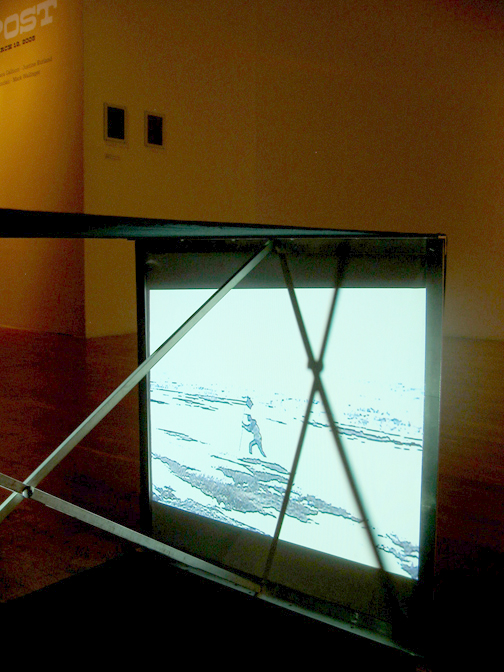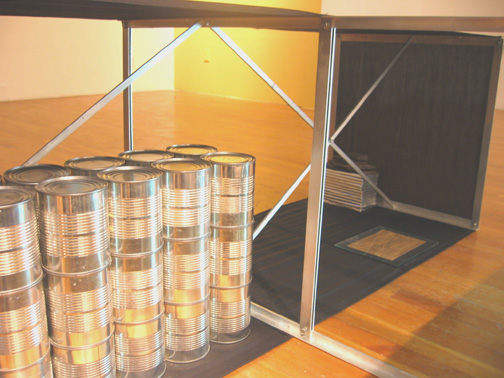Massachusetts College of Art
January 26 — March19 2005Outpost
Group exhibition at Massachusetts College of Art, Boston
︎
Extract from the catalogue published in conjunction with the exhibition Outpost at the Stephen D. Paine Gallery, MassArt, Boston, January 26 — March19, 2005.
Sigrid Sandström
Part sculpture, part installation, part performance, Sigrid Sandström presents us with an intriguing artifact. Harvgrave’s Commitment (No Rights Reserved) ties together seemingly unreleated contemplations on exploration and utopian impulses. Sandström has been in self-imposed exile from her Native Sweden, spending the last 10 years teaching and making art in New York, Texas, Connecticut, France, the Netherlands, Maine and now Boston. She continually finds inspiration in the heroic, often beautifully tragic exploits of explorers, inventers and settlers on the fringes of civilazation. One of Sandström’s major influences comes from the imfamous race to the South Pole in 1911 between the Norwegian explorer Amundsen and his team versus the much-heralded British explorer Scott. It is not the Norwegian’s victory that holds Sandström’s imagination as much as the objects central in this drama. Amundsen built cairns filled with supplies and strategically marked each with a single black flag for his safe return. In the end they were not needed and were left untouched in the frozen landscape.
Another unexpected influence is the Australian inventor Hargrave who in 1893 invented the box kite, described as a design of perfection. Colleagues encouraged Hargrave to patent his brilliant invention but he resisted believing that one should not profit from human freedom and imagination, perhaps making Hargrave the first and last Marxist kite designer. Unbeknownst to him, the Wright brothers would clandestinely co-opt his design for their invention. The inventor, dreamer and explorer come together in Sandström’s piece. Inside of Sandström’s reconstruction of Hargrave’s kite is a video projection depicting a barren snow-covered trrain where the third and last inventor/explorer endlessly attempts to plant a flag in resisting ground. Sandström has recently purchased this land and plans to build a home on it despite its obvious remoteness. Sandström finds kinship in the dropout isolationist movements of the 1970äs, yet her vision seems more survivalist-based (complete with canned goods) than a return to Eden.
Jeffrey Keough, Director of Exhibitions



